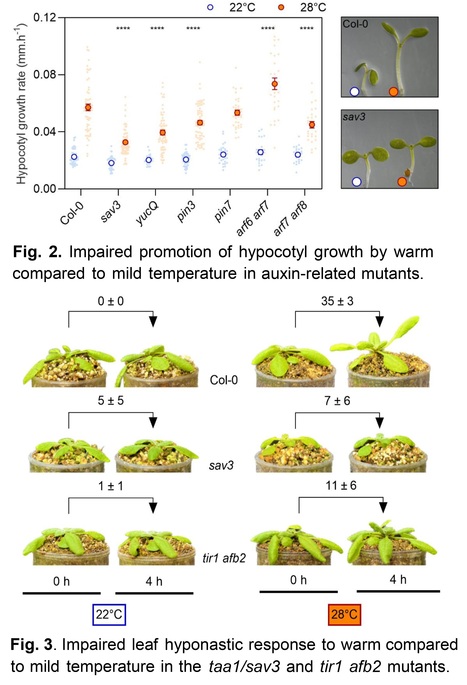Authors: Luciana Bianchimano, María Belén De Luca, María Belén Borniego, María José Iglesias and Jorge J. Casal.
Journal of Experimental Botany (2023)
Abstract: "Twenty-five years ago, a seminal paper demonstrated that warm temperatures increase auxin levels to promote hypocotyl growth in Arabidopsis thaliana. Here we highlight recent advances in auxin-mediated thermomorphogenesis and identify unanswered questions. In the warmth, PHYTOCHROME INTERACTING FACTOR 4 (PIF4) and PIF7 bind the YUCCA 8 gene promoter and, in concert with histone modifications, enhance its expression to increase auxin synthesis in the cotyledons. Once transported to the hypocotyl, auxin promotes cell elongation. The meta-analysis of expression of auxin-related genes in seedlings exposed to temperatures ranging from cold to hot shows complex patterns of response. Changes in auxin only partially account for these responses. The expression of many SMALL AUXIN UP RNA (SAUR) genes reaches a maximum in the warmth, decreasing towards both temperature extremes in correlation with the rate of hypocotyl growth. Warm temperatures enhance primary root growth, the response requires auxin, and the hormone levels increase in the root tip but the impacts on cell division and cell expansion are not clear. A deeper understanding of auxin-mediated temperature control of plant architecture is necessary to face the challenge of global warming."



 Your new post is loading...
Your new post is loading...









